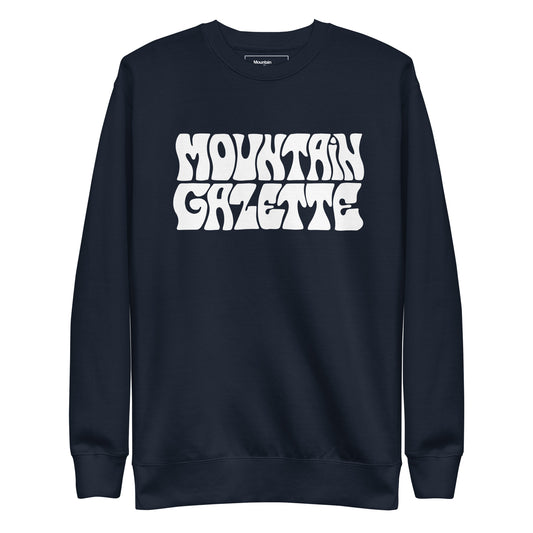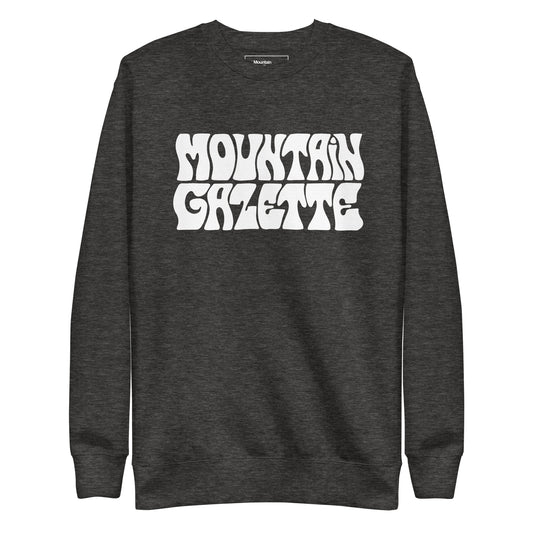This article was originally published in the Here & There newsletter by Kyle Frost. Here & There is now Mountain Gazette's weekly Thursday newsletter.
Are Blue Zones Real?
A remarkable amount of articles have been written and marketing dollars spent on the topic of “Blue Zones” over the last 20 years. These specific regions, where people tend to live significantly longer and healthier lives than the average global population, have spawned their own tourism segment and innumerable theories about the effects of diet, climate, and lifestyle on health. There’s even a new Netflix series.
There's only one problem. It's probably not true.

How did we get here?
The term “Blue Zones” arises from the demographic research of Gianni Pes and Michel Poulain, who drew blue circles on a map where they identified high concentrations of centenarians (people who live to over 100).
This work was further developed by Dan Buettner, who worked with National Geographic, scientists, and demographic researchers to identify more of these areas. They identified five key regions and postulated that there was a similarity in lifestyle, diet, and community traits that contributed to the exceptional longevity.
The Blue Zones are:
- Sardinia, Italy: Home to some of the oldest men in the world. They live in mountainous regions where they typically work on farms and drink a moderate amount of red wine.
- Okinawa, Japan: Okinawans eat a lot of soy-based foods and practice tai chi, a meditative form of exercise.
- Nicoya Peninsula, Costa Rica: Locals often perform physical jobs into old age, have a diet based around beans and corn tortillas, and have a sense of life purpose known as “plan de vida.”
- Loma Linda, California: A Seventh-day Adventists community. They’re strict vegetarians and live in tight-knit communities.
- Ikaria, Greece: Icaria is an island in Greece where people eat a Mediterranean diet rich in olive oil, red wine and homegrown vegetables.
Some commonalities between the locations were a primarily plant based diet, moderate alcohol consumption, exercise as a part of daily life, and more – a group of characteristics that Blue Zones ® now calls the Power 9 ®.

The problem
While these blue zones have enjoyed increased popularity and influence over the past 20 years, there’s something that few people seem to talk about – and that’s a growing body of evidence that the initial identification of Blue Zones was based on faulty data.
A 2019 study looking at supercentenarian concentrations in the United States found that “the state-specific introduction of birth certificates is associated with a 69-82% fall in the number of supercentenarian (people over 110 years old) records.” Basically, the ‘outliers’ tend to disappear around the same time that record keeping gets more stringent.
The same study also delved into international blue zones. While record keeping was often more effective in these regions, these zones are often associated with high crime rates and lower than average lifespans – despite having abnormally high concentrations of supercentenarians.
While Japan does have an aging population and a high count of people over 100 years old, in 2010 they reported that over 200k of officially recorded centenarians were “missing”. That investigation was kicked into motion when officials tried to congratulate the “oldest man in Tokyo” on his 111th birthday, and instead found 30-year-old mummified remains. The BBC reported in 2010 that “The Justice Ministry said some of those unaccounted for may have died as long ago as World War II, possibly during the post-war turmoil.”
Would you expect that areas “with low incomes, low literacy, high crime rate and short life expectancy relative to their national average” (all aspects of Sardinia, Okinawa, and Ikaria), also have an effect that also produces high numbers of supercentenarians? Or is the simpler explanation a combination of chance, poor record keeping, and pension fraud?
Why does this matter?
A common criticism of the Blue Zone conclusions is an approach that spurred a hypothesis after knowing the data. It’s a research practice called “hypothesizing after the results are known”, or HARKing. Researchers used demographic data about areas that had high levels of supercentenarians and worked backwards to determine the “cause”.
With the evidence of poor records and pension fraud, it’s also possible that follow-on research into the habits, and diets that predict extreme old age is flawed, because the people used weren’t actually as old as demographic data indicated.
The challenge of criticizing Blue Zones
Even if the “Blue Zones” are based on faulty data, this doesn’t mean that living a relaxed lifestyle, with access to outdoors, lots of walking, or some of the other “markers” of Blue Zones are bad for you. By all means, let’s promote these things (that basically typify the normal lifestyle of many non-US countries). These takeaways feel like common sense approaches to living a healthier lifestyle.
There’s plenty of actual evidence that is not based on Blue Zones that illustrates the benefits of those approaches. So, Kyle, are you just being pedantic? Maybe. But that’s kinda my schtick. It’s frustrating to see positive lifestyle changes being wrapped up in a package that utilizes bad data and science to prove its point. Blue Zones are sexy, marketable, and memorable. Many people like frameworks that tell them the exact steps to live a better life. It’s a great quotable to throw out at parties. It sells cookbooks, tourism, branded “Blue Zone” beans (yes, really), TV shows and more. But bad science with a positive message is still bad science and shouldn’t be lauded.
And ultimately, a simpler solution might be to adopt the lifestyle and diet of a comparable country that is not the United States.


















